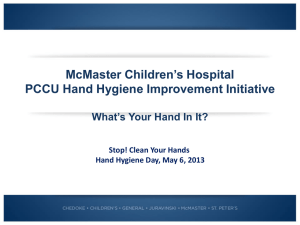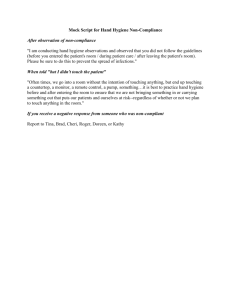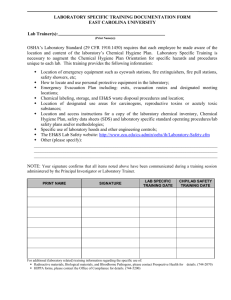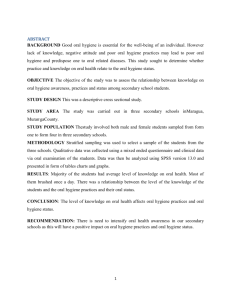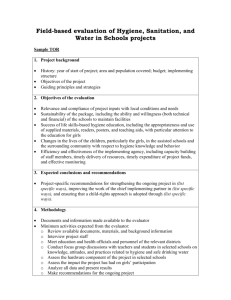The ideas and practices of hygiene in Chinese society from the
advertisement
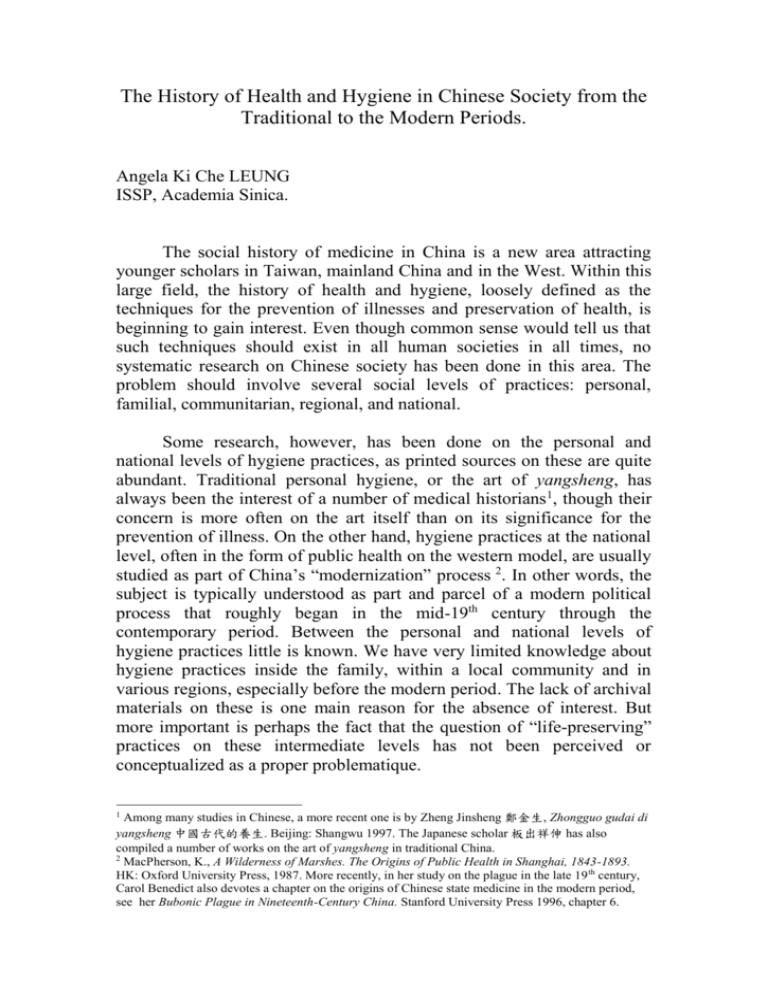
The History of Health and Hygiene in Chinese Society from the Traditional to the Modern Periods. Angela Ki Che LEUNG ISSP, Academia Sinica. The social history of medicine in China is a new area attracting younger scholars in Taiwan, mainland China and in the West. Within this large field, the history of health and hygiene, loosely defined as the techniques for the prevention of illnesses and preservation of health, is beginning to gain interest. Even though common sense would tell us that such techniques should exist in all human societies in all times, no systematic research on Chinese society has been done in this area. The problem should involve several social levels of practices: personal, familial, communitarian, regional, and national. Some research, however, has been done on the personal and national levels of hygiene practices, as printed sources on these are quite abundant. Traditional personal hygiene, or the art of yangsheng, has always been the interest of a number of medical historians1, though their concern is more often on the art itself than on its significance for the prevention of illness. On the other hand, hygiene practices at the national level, often in the form of public health on the western model, are usually studied as part of China’s “modernization” process 2. In other words, the subject is typically understood as part and parcel of a modern political process that roughly began in the mid-19th century through the contemporary period. Between the personal and national levels of hygiene practices little is known. We have very limited knowledge about hygiene practices inside the family, within a local community and in various regions, especially before the modern period. The lack of archival materials on these is one main reason for the absence of interest. But more important is perhaps the fact that the question of “life-preserving” practices on these intermediate levels has not been perceived or conceptualized as a proper problematique. Among many studies in Chinese, a more recent one is by Zheng Jinsheng 鄭金生, Zhongguo gudai di yangsheng 中國古代的養生. Beijing: Shangwu 1997. The Japanese scholar 板出祥伸 has also compiled a number of works on the art of yangsheng in traditional China. 2 MacPherson, K., A Wilderness of Marshes. The Origins of Public Health in Shanghai, 1843-1893. HK: Oxford University Press, 1987. More recently, in her study on the plague in the late 19 th century, Carol Benedict also devotes a chapter on the origins of Chinese state medicine in the modern period, see her Bubonic Plague in Nineteenth-Century China. Stanford University Press 1996, chapter 6. 1 Conditions have probably become ripe for a more systematic study on the problem of health and hygiene practices on all levels. First of all, the social history of medicine in China has become a productive field and some of the findings are useful for the study of health and hygiene 3. This development is particularly interesting in Taiwan. To this one must add the important fact that there is already an extremely rich literature on Western social history of medicine that inspires new perspectives for the study of China. Secondly, recent progress in related fields, such as the history of the body 4 and history of the environment 5 is also an encouraging development for the history of health and hygiene. On top of all these, many useful sources, such as medical classics and texts, archival materials in legal cases, and archives of maritime customs, are easily available in hard copy or microfilm form. Some are even accessible online. Last but not least, as local archives in mainland China are slowly opening up, we could expect new sources for the topic, especially on practices on the communitarian and regional levels in the modern period. The study of the history of health and hygiene in Chinese society, on the other hand, would necessitate new approaches to important issues that have been under-studied so far. An example is the idea of illness or disease in traditional China, and how these were related to the body and to the environment. Comparative approaches with theories provided by anthropologists are indispensable for a better and deeper understanding of, for example, the causation of diseases. Another obvious question is the idea of contagion. The classical term chuanran or jianran underwent significant changes in meaning from the medieval to the pre-modern periods, with the human body becoming increasingly more important as an agent of transmission. 6 To understand these changes would be indispensable for the analyses of hygiene practices of all levels in different historical periods. The analysis of the ideas of contagion is also indispensable in comprehending public measures in regard to epidemics on which we have richer materials in the late imperial and modern periods. The series of conferences held by the research group on “Life and Medicine” of the Institute of History and Philology, Academia Sinica since the late 1990s are good examples. They include important topics like “The History of diseases”, “The History of Cleanliness” that are closely related to the history of health and hygiene. 4 Works by Dorothy Ko, Charlotte Furth are obvious examples. 5 The conference volume edited by Elvin, M. & Liu, T.-j, Sediments of Time. Environment and Sosciety in Chinese History. (Cambridge University Press 1998) is by far the most important work. A second international conference on the environment was held in November 2002, and we may expect more publications in this field. Diseases and environment is one of the main concerns of the project. 6 See my working paper “Leprosy in Ming-Qing China: Social Reactions” 2002. 3 Secondly, the perspective of “the preservation of life” provides new angles to the study of the history of specific diseases, be they chronic, endemic, or epidemic. Finer analyses of the nosology and etiology of important diseases in history such as leprosy (or li/lai), tuberculosis (or laobing), malaria (or zhangqi), beri-beri (or jiaoqi), cholera, dysentery, plague, and so on would be necessary for the interpretation of private and public health practices. For the pre-modern periods, it is hard to estimate the actual effects of hygiene practices on morbidity and mortality caused by various diseases. One could, however, analyze the rationale of such practices in relation to the society’s understanding of diseases and epidemics. In the modern period, available statistics would allow more detailed study on the changes in mortality and morbidity of certain diseases in relation to the implementation of health practices. Thirdly, illness and health as social representations that have rarely been studied in the case of China would be a central issue. As the French sociologist Claudine Herzlich puts it, the language in which one expresses health and illness, in which one interprets their causes and consequences, is not a language of the body, but more often that of relations between the individual and society. To be ill means the interruption of one’s social activities and the modification of one’s social identity. To be healthy is not merely a biological fact, but also implies the capacity to be in control of one’s physical and social state 7 . The individual’s and society’s efforts in the “preservation of health” could thus better be understood in terms of social practices for the maintenance of a “normative” state, or for the prevention of uncontrolled social disruption in case of illness or epidemics. The study of legal cases concerning the sick or dying is one of the interesting ways to look at the problem. The organization of charitable and other institutions related to the caring of “health”, including hospitals for the sick, or religious practices in case of illness or epidemics could also be understood within this framework of analysis. Fourthly, comparative approaches would probably clarify some aspects of the complex question of China’s modernity. The first implementation of systematic public health measures in western Europe was generally explained as an integral part of Europe’s emerging modernity.8 China’s efforts in modernization from the late 19 th century 7 Philippe Adam, Claudine Herzlich, Sociologie de la maladie et de la médecine. Paris: Nathan 1994, p. 64-66, quoting Georges Ganguilhem. 8 The first general work on public health by Rosen published in 1958 already pointed out that public health was integrated into national policy in the 17 th century in the West (pp. 114-119, 137), a period of the emergence of European nation states. See George Rosen, A History of Public Health. Johns Hopkins University Press 1993 (1958). Among numerous subsequent publications elaborating on this onward clearly included the establishment of western style public health institutions. However, one might ask how relevant China’s conditions were to the principles of western hygiene practices. For example, while public health essentially accompanied urbanization in the West, China’s health problem did not seem to respect the rural-urban dichotomy in the early modern period. While some questions were central to public health in the modern West due to industrialization or their specific conceptions of dirt and miasma, China had different sets of problems that were already observed by contemporary foreign residents. The reception of Western style public health measures even in the 20th century was never total. How China received, rejected, or transformed Western ideas of the healthy body, of illness, and of public health policies or hygiene practices for her own purposes was a complex, but most interesting and important subject. The question provides intriguing links between the issues of nationalism, modern state-building, colonialism, science, and the body.9 The project is by definition an interdisciplinary one. Historians of medicine, specialists of public health, sociologists, historical demographers, anthropologists, or even medical doctors could have valuable contributions. The results of the project should allow more fruitful dialogues with Western colleagues who work on the history of hygiene in the West and hopefully would provide a new perspective on the question of modernity. topic, one example is James Riley’s The 18th-century Campaign to Avoid Disease. (London: McMillan 1987). Scholarship in more recent years tends to take a more critical stand towards the progress thesis and borrow more heavily on Michel Foucault’s social control theory, see Deborah Lupton’s The Imperative of Health. Public Health and the Regulated Body. Sage 1995. But both put emphasis on the relation between public health and modern state building. 9 The journal of cultural studies, Positions, has recently published a special issue “Empires of Hygiene” with articles discussing several of these issues. See 6:3 (winter 1998).

